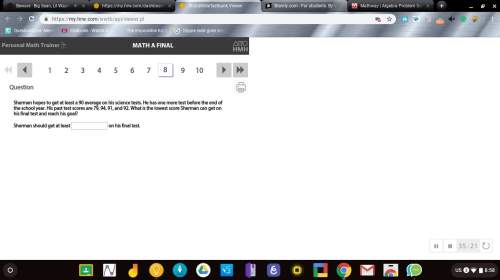
Mathematics, 24.06.2021 16:00 icantspeakengles
-4, -6, -3, -21 - 22 Select all functions that define the glven sequence. f(1) = 4 f(n) = = -f(n − 1), for n = 2, 3, 4, ... f(n) = 4.(-3) (– 1) f(n) = (-3) (n - 1) = -4. f(1) = -4 f(n)= (n − 1), for n = 2, 3, 4, ... f(n) = 4. O– (n − 1) f(1) = -4 f(n) = -3/(n − 1), for n = 2, 3, 4, ...

Answers: 2


Other questions on the subject: Mathematics

Mathematics, 21.06.2019 16:00, emilyblaxton
Pick the expression that matches this description: a polynomial of the 5th degree with a leading coefficient of 7 and a constant term of 6 (choice a) 7x^5+2x^2+6 (choice b) 7x^6−6x^4+5 (choice c) 6x^7−x^5+5 (choice d) 6x^5+x^4+7
Answers: 2

Mathematics, 21.06.2019 20:10, thekid3176
Which value of m will create a system of parallel lines with no solution? y= mx - 6 8x - 4y = 12
Answers: 1

Mathematics, 22.06.2019 03:00, ddarby
Barrett is comparing the membership fees for two museums. the art museum charges a one-time fee of $8.25 plus $2.25 per month. the science museum charges a one-time fee of $10.75 plus $3.50 per month. how much does barrett save by joining the art museum instead of the science museum?
Answers: 3

Mathematics, 22.06.2019 03:30, texas101st78
Find the solution set for this equation: t^2+7t=0 separate the two values with a comma.
Answers: 2
You know the right answer?
-4, -6, -3, -21 - 22 Select all functions that define the glven sequence. f(1) = 4 f(n) = = -f(n − 1...
Questions in other subjects:

Mathematics, 05.09.2020 01:01

Social Studies, 05.09.2020 01:01






Mathematics, 05.09.2020 01:01





